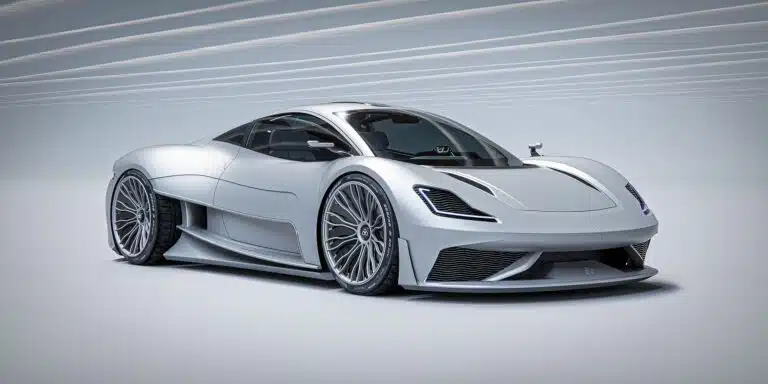Mythed about the reduction of fuel expenses debunked

The reduction of fuel expenditure has become a topic of great interest for many drivers looking to economize and be more efficient in their consumption. However, over time, numerous myths have circulated that can confuse users and lead them down the wrong path. Below, some of these false myths will be addressed, and the reality behind them will be presented, providing well-founded information that will help make more conscious and responsible decisions about fuel usage.
Many drivers, in their quest to save fuel, get caught up in various erroneous beliefs that often harm more than help. Below, several myths about fuel expenditure reduction will be addressed, dismantling preconceived ideas and providing reliable information on how to improve gasoline consumption efficiency.
Myth 1: Warming up the engine is necessary to save fuel
The idea that the engine must be warmed up for minutes before starting to drive is a myth that has become obsolete. Modern engines are designed to operate efficiently from the first moment they are started. Leaving the vehicle idling is not only unnecessary, but it can also increase fuel consumption.
Myth 2: Adding additives to fuel improves performance
Many believe that additives can provide an instant improvement in fuel performance. However, most of these products do not deliver on their promises and can result in additional spending without tangible benefits. It is advisable to rely on regular vehicle maintenance to maintain efficiency.
Myth 3: Always driving in high gear reduces consumption
While it is true that driving in high gears at low RPM can be efficient, it is not the only way to optimize consumption. There are situations where shifting to shorter gears can help maintain control and efficiency, especially on inclines or during rapid acceleration. Therefore, this myth should be approached with caution.
Myth 4: Lowering the windows is better than using the air conditioning
A common belief is that lowering the windows helps to save fuel instead of using the air conditioning. In reality, this may not be true, especially at high speeds. Increased air resistance can cause the engine to consume more fuel, while using the air conditioning, although it also uses more energy, can be more efficient in certain scenarios.
Myth 5: Driving in neutral saves fuel
The myth that putting the vehicle in neutral when descending a hill saves fuel is misleading. In fact, most modern cars disable the fuel injection system only when in gear. The best practice is to maintain control of the vehicle in gear and allow it to slow naturally using the engine.
Myth 6: It’s better to wait until the tank is empty to refuel
Many believe that waiting until the tank is empty is an effective savings method. However, this can lead to sediment accumulation at the bottom of the tank, which can damage the fuel system and increase long-term consumption. It is better to keep the tank above a quarter of its capacity.
Myth 7: Premium fuel is better for the engine
The belief that high-octane fuel is more beneficial for all vehicles is a major myth. Usually, engines do not require premium fuel unless specified by the manufacturer. Using it unnecessarily only results in higher costs without performance improvement. The quality and suitability of the fuel are key, but not necessarily its octane rating.
For more information on how to improve fuel consumption efficiency and avoid common mistakes, additional resources can be consulted, such as this link, or read about the common mistakes that increase fuel expenditure.
Knowing the reality behind these myths can help optimize driving and significantly contribute to reducing unnecessary expenses. If you wish to delve deeper into this topic, feel free to visit this article on reducing fuel expenditure and its most common myths.
There are numerous myths surrounding the reduction of fuel expenditure that have persisted over time. Many drivers still believe that certain practices dramatically improve their vehicles’ performance, when in reality, these beliefs are unfounded. For example, one of the most widespread myths is that warming up the engine before driving saves fuel. The truth is that modern engines do not require a prolonged warming period, and excessive use of this practice can be counterproductive.
Another common myth is the idea that always using the highest gear is the best way to save fuel. While it may seem logical, driving in high gear at low RPM can lead to inefficient engine operation. This behavior can cause an increase in fuel consumption, rather than the expected reduction.
Additionally, there has been a promotion of the belief that adding additives to fuel will contribute to immediate savings in consumption. However, most of these products do not fulfill their promises and may not be the solution for those seeking to improve efficiency. It is crucial to understand that fuel quality and vehicle maintenance are factors that significantly impact performance.
Finally, it is essential to highlight that opening the windows instead of using the air conditioning to save fuel is another myth. At moderate speeds, this may be true, but at high speeds, the air resistance generated by open windows can increase consumption. Therefore, being informed and debunking these myths will allow drivers to make more accurate and _responsible_ decisions in using their vehicles.



